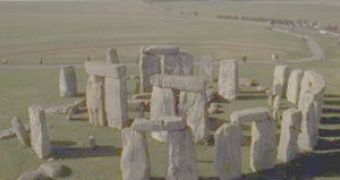Recently, British archaeologists have found close to the famous ancient stone monument of Stonehenge, in southwest England, the remains of a large settlement dating 4,600 years ago during the Neolithic era.
The researchers believe that the villagers from the largest Neolithic village ever found in Britain are the builders of the stone circle at Stonehenge, believed to have been a temple, burial site or an astronomy point between 5,000 and 3,600 years ago. "We found the remains of eight houses," said Mike Parker Pearson, a professor of archaeology at Sheffield University. "We think they are part of a much larger settlement. I suspect we can identify 25 likely house sites. My guess is that there are many more than that," he added.
The new archaeological site is situated at the Durrington Walls, less than two miles (3 km) from Stonehenge and is explored by researchers working on the seven-year Stonehenge Riverside Project. They detected by now dozens of hearths and the outlines of box beds, wooden dressers or cupboards, but also 4,600 year-old debris, compassing burned stones and animal bones. "We think we are looking at the village of the builders of Stonehenge," he added.
The square huts, with flanks of 16 feet (5m) length, were situated in a small valley north of Stonehenge, leading down to the Avon River. "We think our discovery is very significant for understanding the purpose of Stonehenge. What we have revealed is that Stonehenge is one half of a larger complex," said Parker Pearson, referring to the stone and wooden circles.
Probably Stonehenge and Durrington Walls functioned as a unit: Neolithic people joined at Durrington Walls for massive parties while Stonehenge served as a memorial or burial site for the dead. "We are looking at least a century, probably several centuries of use, at both sites," said Parker Pearson. "Stonehenge is our biggest cemetery from that period. There is a very interesting contrast in terms of life and death," he added.
The researchers noticed that while Stonehenge's avenue is set on the midsummer solstice sunrise, the Durrington avenue fitted with the midwinter solstice sunset.
The peak of the tourists' number at Stonehenge is exactly during the summer solstice, corresponding to the longest day of the year.
Druids, a modern pagan religious order getting back to the tradition of British Celts' priests, gather at Stonehenge, about 100 miles (160 km) west of London, during exactly the summer solstice, as they regard it as a spiritualism center. "This is a place of enormous importance that has been remembered over a long period of time," said Julian Thomas of Manchester University who also worked on the project.

 14 DAY TRIAL //
14 DAY TRIAL //